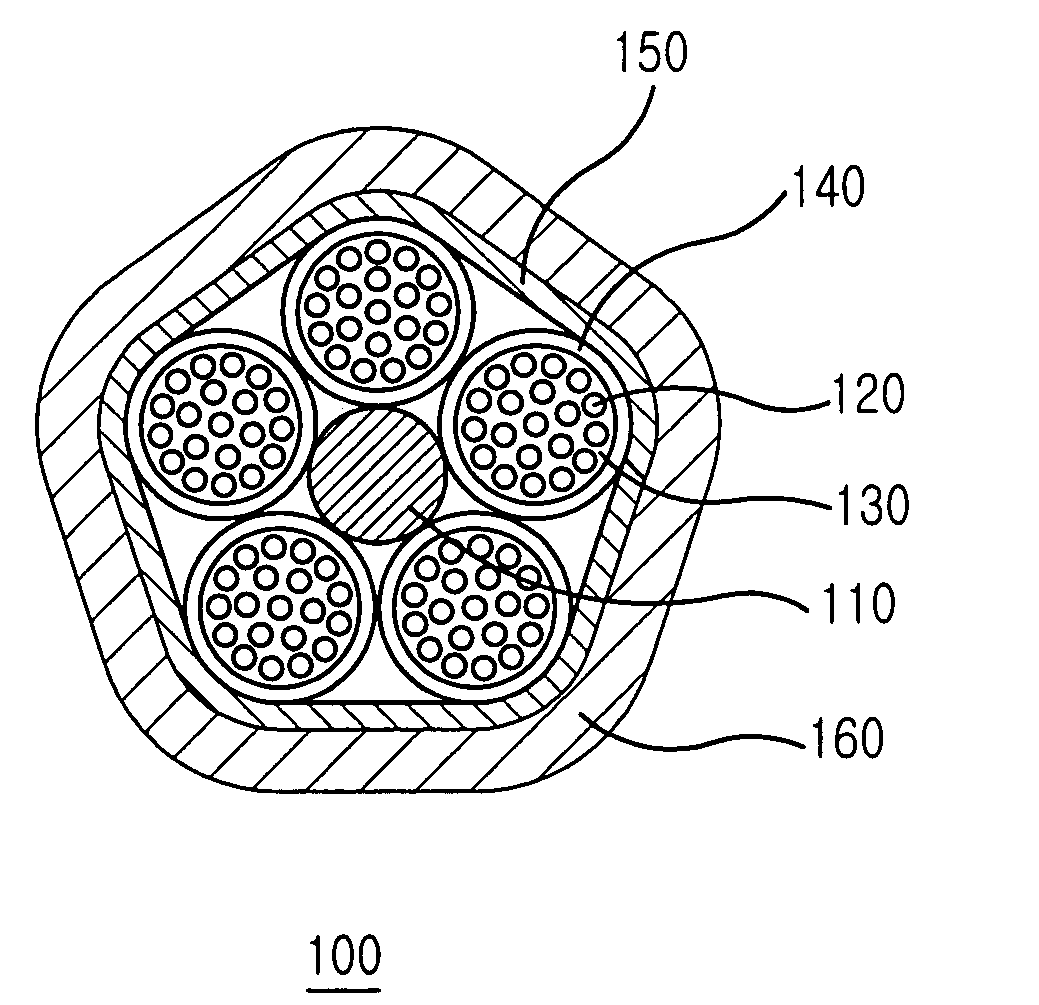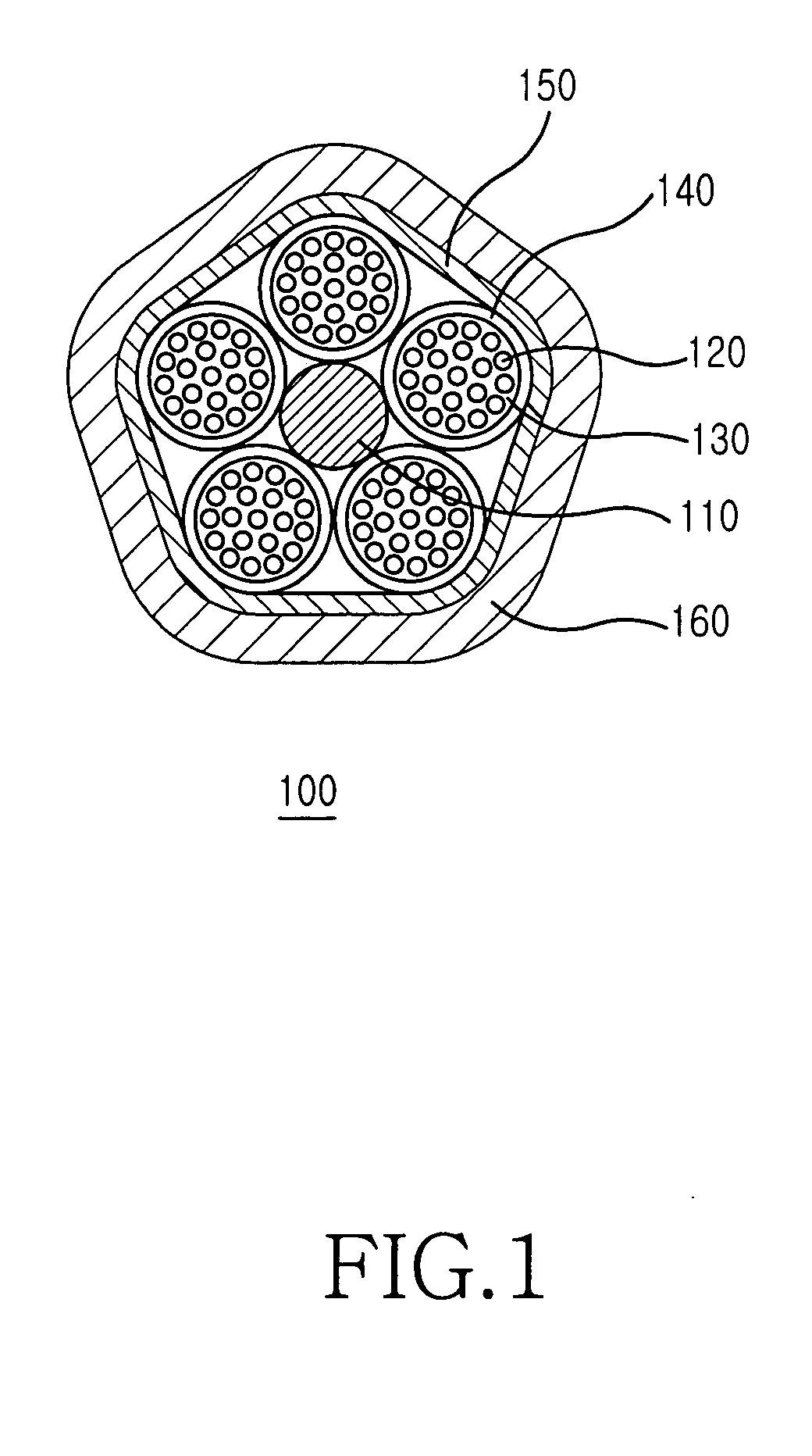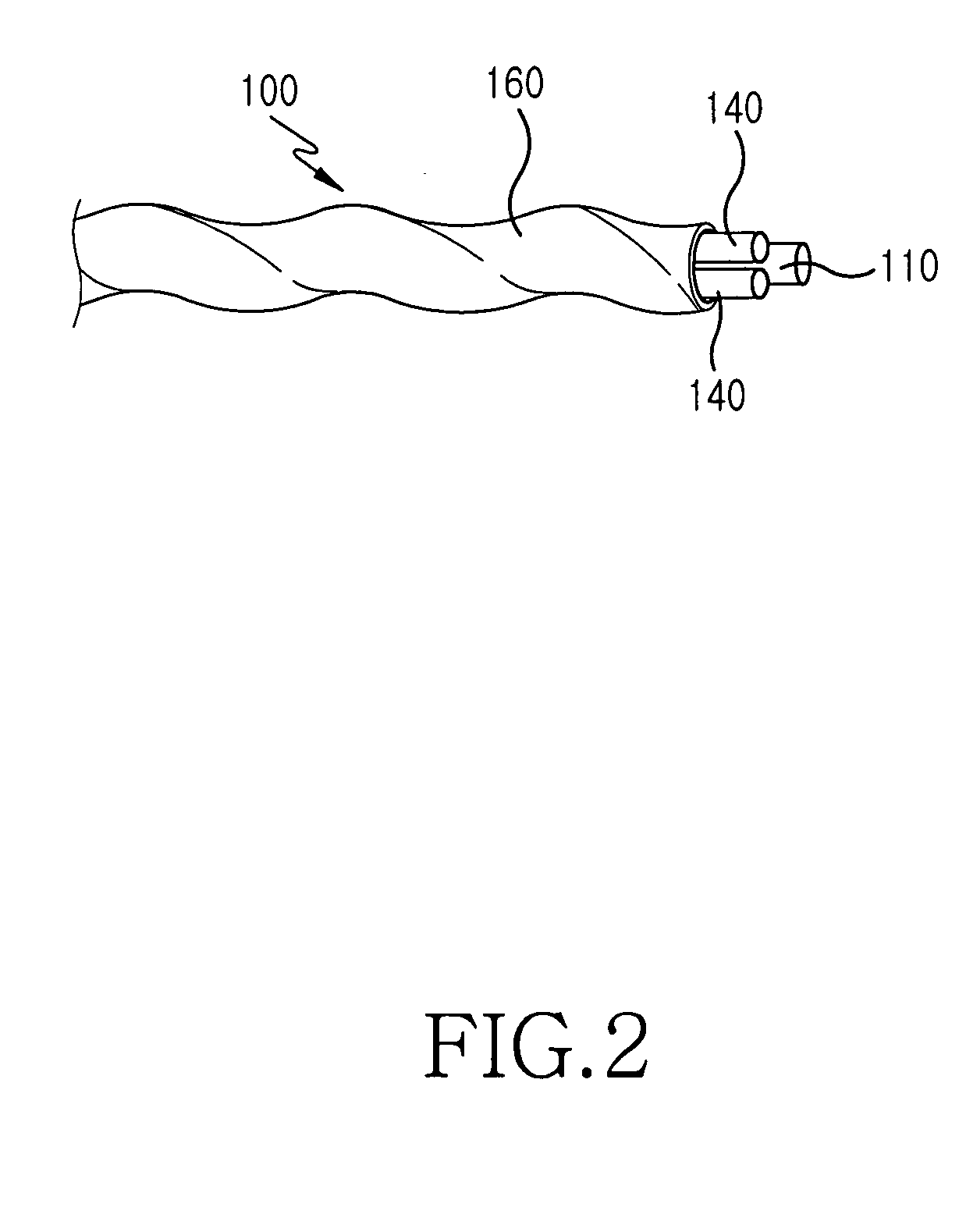Optical filber cable suitable for installation using an air-blown installation method
- Summary
- Abstract
- Description
- Claims
- Application Information
AI Technical Summary
Benefits of technology
Problems solved by technology
Method used
Image
Examples
Embodiment Construction
[0017] Hereinafter, embodiments of the present invention will be described with reference to the accompanying drawings. For the purposes of clarity and simplicity, a detailed description of known functions and configurations incorporated herein will be omitted as it may make the subject matter of the present invention unclear.
[0018]FIG. 1 is a sectional view showing an optical fiber cable according to a first embodiment of the present invention. As shown, an optical fiber cable 100 includes a center tensile member 110, a plurality of optical fibers 120, a plurality of loose tubes 140, a binder 150, and a sheath 160.
[0019] The center tensile member 110 provides tension-resistant force to the optical fiber cable 100, and is located substantially at a center of the optical fiber cable 100. The center tensile member 110 may be made of FRP (Fiberglass Reinforced Plastic).
[0020] The plurality of loose tubes 140 are aligned in such a manner that they surround the center tensile member 1...
PUM
 Login to View More
Login to View More Abstract
Description
Claims
Application Information
 Login to View More
Login to View More - R&D
- Intellectual Property
- Life Sciences
- Materials
- Tech Scout
- Unparalleled Data Quality
- Higher Quality Content
- 60% Fewer Hallucinations
Browse by: Latest US Patents, China's latest patents, Technical Efficacy Thesaurus, Application Domain, Technology Topic, Popular Technical Reports.
© 2025 PatSnap. All rights reserved.Legal|Privacy policy|Modern Slavery Act Transparency Statement|Sitemap|About US| Contact US: help@patsnap.com



